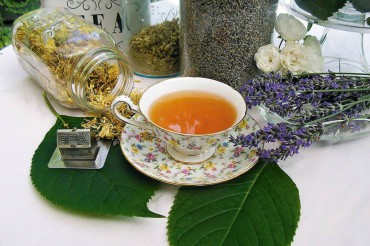 Tea time will stop business in some cultures; it can also conjure up images of romantic and floriferous parties or bring warm relaxation to a cold winter day.
Tea time will stop business in some cultures; it can also conjure up images of romantic and floriferous parties or bring warm relaxation to a cold winter day.
Tea… Is it a ritual, an herb or a beverage? Technically, tea is the plant Camellia sinensis. Varieties of true tea plants are not cultivated in many gardens in the Pacific Northwest. The leaves of these subtropical evergreen shrubs are processed to create different selections of tea such as black or oolong. The study of tea goes far in history, with rich scandals and even a declaration of independence. The evolution of tea in today’s market can boggle the mind as it takes on a more generic term. It is sold in many forms, from rich black Camellia sinensis to herbal infusions using an array of plants.
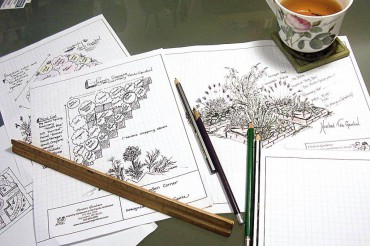 In its simplest definition, the generic term “tea” is an infusion of plant parts in warm water to create a flavored beverage. The cultivation of Camellia sinensis for tea is probably something most home gardeners will not take on. It is semi-hardy in the South Sound and can be planted as an ornamental but not for harvesting. A garden for tea blending is filled with herbs. They can be grown and harvested for use alone or blended with purchased loose “tea.” Pick personal herbal favorites and make room to plant for abundant harvests. Don’t bother taking up space with an herb you don’t like, since some perennial herbs can be aggressive. They need the sunniest spot in the garden and a place where they can be easily harvested. Raised beds with rich soil are just right to promote good drainage and healthy plants.
In its simplest definition, the generic term “tea” is an infusion of plant parts in warm water to create a flavored beverage. The cultivation of Camellia sinensis for tea is probably something most home gardeners will not take on. It is semi-hardy in the South Sound and can be planted as an ornamental but not for harvesting. A garden for tea blending is filled with herbs. They can be grown and harvested for use alone or blended with purchased loose “tea.” Pick personal herbal favorites and make room to plant for abundant harvests. Don’t bother taking up space with an herb you don’t like, since some perennial herbs can be aggressive. They need the sunniest spot in the garden and a place where they can be easily harvested. Raised beds with rich soil are just right to promote good drainage and healthy plants.
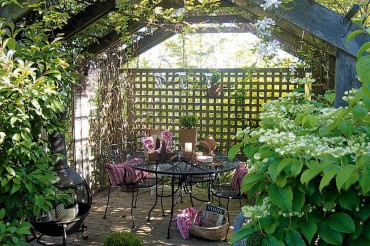 Proper harvest of plants will help bring in crops with the most flavor and fragrance. Herbs are at their best in the morning after the dew dries but before the hot sun is on them. Learn the part of the plant used, whether it is the leaves, petals or roots. For good leaf production during growing, never let the herbs flower. It is a genetic signal to slow leaf production and the flavor will be lost to the flowers. If flowers are needed, cut when they are freshly opened and not overbloomed. Harvest fresh, full leaved stems from plants, bundle loosely and bind with a rubber band. Flower buds for tea are typically fresh cut while on the stems and popped off after they dry. Larger flower heads or weak stemmed plants can be placed on screens. Dry in a dark place with good air circulation. The goal is to keep sun and moisture off, with enough air to circulate around the drying bundles. For tea making, it is best to dry the leaves, flowers or petals whole and break them down later in the mixing process. Be sure the plant material is cornflake-dry before storage. Strip leaves off stems and store in glass jars. Don’t forget to label the jars; many herbs look the same after they are dry.
Proper harvest of plants will help bring in crops with the most flavor and fragrance. Herbs are at their best in the morning after the dew dries but before the hot sun is on them. Learn the part of the plant used, whether it is the leaves, petals or roots. For good leaf production during growing, never let the herbs flower. It is a genetic signal to slow leaf production and the flavor will be lost to the flowers. If flowers are needed, cut when they are freshly opened and not overbloomed. Harvest fresh, full leaved stems from plants, bundle loosely and bind with a rubber band. Flower buds for tea are typically fresh cut while on the stems and popped off after they dry. Larger flower heads or weak stemmed plants can be placed on screens. Dry in a dark place with good air circulation. The goal is to keep sun and moisture off, with enough air to circulate around the drying bundles. For tea making, it is best to dry the leaves, flowers or petals whole and break them down later in the mixing process. Be sure the plant material is cornflake-dry before storage. Strip leaves off stems and store in glass jars. Don’t forget to label the jars; many herbs look the same after they are dry.
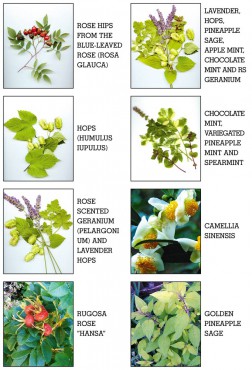
The art of crafting tea mixes from the garden begins with your own taste buds. Combining different flavors of herbs is like making a bouquet. Experiment by blending two together at an equal ratio. Test the blend then add more of one or the other to achieve a flavorful balance. To further the adventure of a tea garden, learn medicinal qualities of the plants as well. Mint is a great tea after dinner to aid in digestion while a cup of chamomile tea relaxes and relieves stress.
Winter is the perfect time to plan out a tea garden. Start the inspiration by relaxing with a warm cup of Darjeeling with a mint leaf and twist of lemon, then sketch away. Use graph paper to draw garden spaces. Get creative and lay out herbs artistically. Move away from straight rows and lay out inventive patterns that intermingle with each other reminiscent of knot gardens. Do homework on which varieties to grow and their cultural needs. “Tea” making can be a rewarding garden project that gives back.
Herbal Tea Recipe Blends
Experiment with flavors you like, and try not to add more than three ingredients at a time. Blend all herbs thoroughly, store in an airtight container away from heat and light. To use: 1 teaspoon of loose herbs per cup of hot water.
- 1 cup dried lavender buds
- 1 cup dried spearmint
- 1/2 cup dried
German Chamomile Blossoms
- A Tangy Touch of Citrus
- 1 cup dried pineapple sage
- 1 cup rosehips, lightly crushed
- 1/2 cup dried lemon balm
A Floral Blend
- 1/2 cup rose petals
- 1/2 cup lavender buds
- 1 cup lemon verbena
Herbs Mixed with Indian or China Teas
Create flavorful blends from purchased bulk teas. Mix a single herb with bulk tea such as Darjeeling, green or Earl Gray to create unique blends. The homegrown herb will enhance the tea with flavor and fragrance. Begin by mixing the tea 4 parts to 1 part of dried herb. Experiment with the flavor intensity and add more herb to enhance or more tea to tone down.
Combinations to try:
English lavender buds with Earl Gray
- Spearmint with green tea
- Bee balm with Darjeeling.
Fresh Herbal Sun Tea
Fill a gallon glass jar half way with fresh, clean herb leaves, loosely packed. Fill the jar with cold water. Place in the sun and allow to steep for four to six hours. Strain out herbs before serving.
Use a favorite type of tea such as green tea or Darjeeling and add 1 cup of fresh herb leaves. Steep in the sun as above recipe. Remove the tea bags and herbs before serving. Serve with herbal ice cubes.
Herbal Ice Cubes
Wash and clean fresh herb leaves. Add a leaf or two or 1 teaspoon of chopped herb to each ice cube section in an ice cube tray. Cover with cold water and freeze solid. Pop out cubes and store in freezer bags. Mint cubes are perfect for iced tea. Violas add an elegant touch for tea parties.




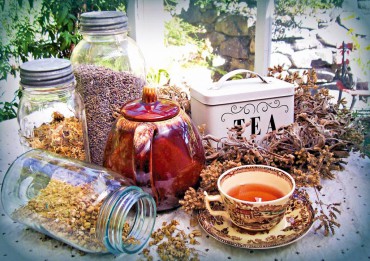
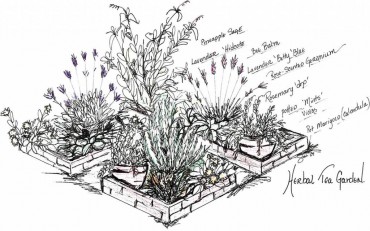
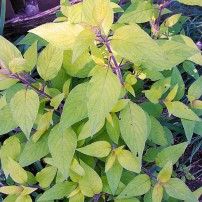
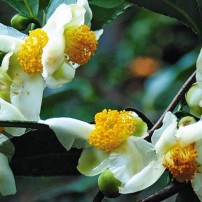
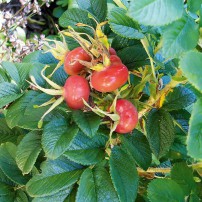
























Comments